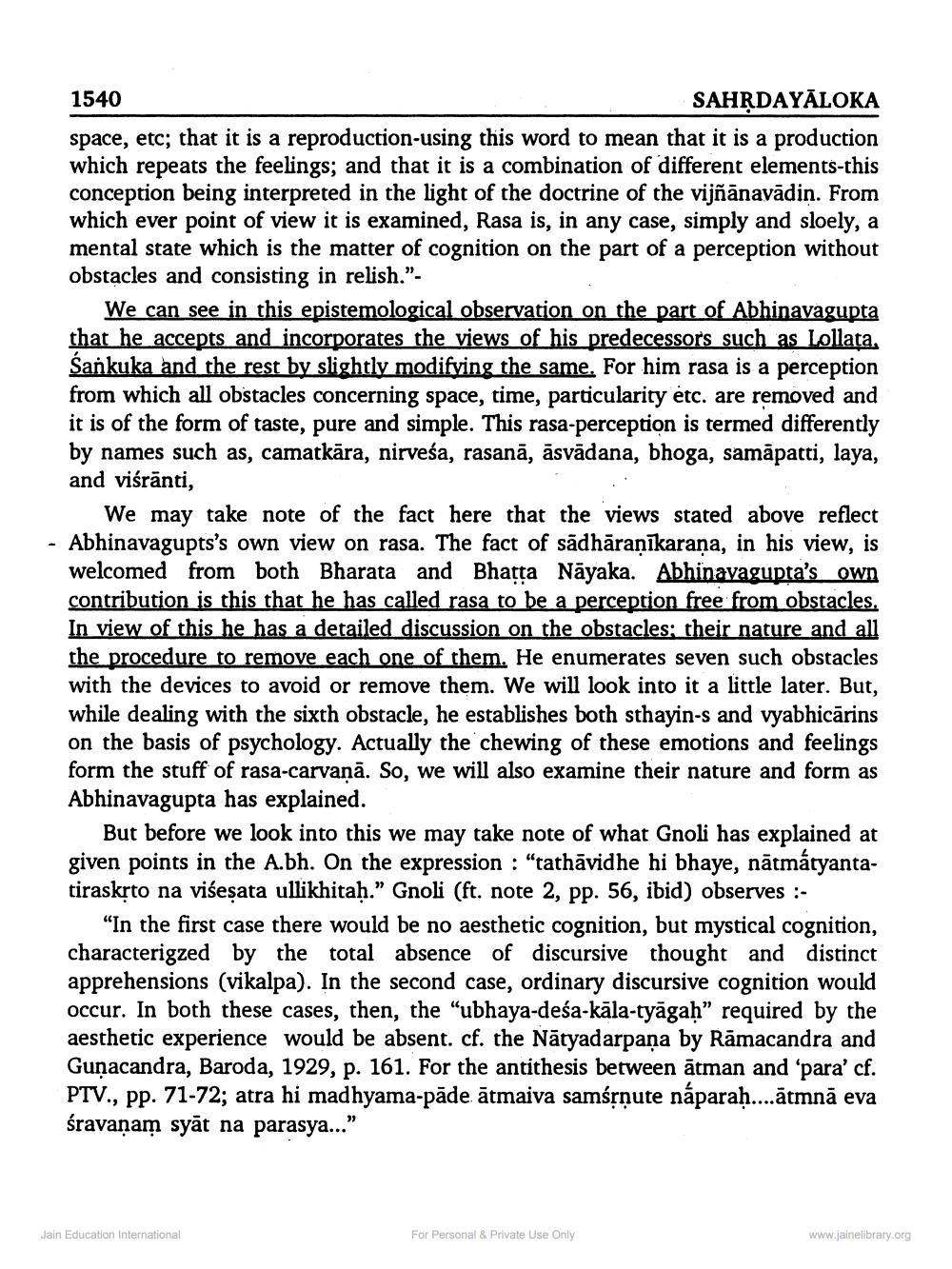________________
1540
SAHRDAYĀLOKA space, etc; that it is a reproduction-using this word to mean that it is a production which repeats the feelings; and that it is a combination of different elements-this conception being interpreted in the light of the doctrine of the vijñānavādin. From which ever point of view it is examined, Rasa is, in any case, simply and sloely, a mental state which is the matter of cognition on the part of a perception without obstacles and consisting in relish."
We can see in this epistemological observation on the part of Abhinavagupta that he accepts and incorporates the views of his predecessors such as Lollata, Sankuka and the rest by slightly modifying the same. For him rasa is a perception from which all obstacles concerning space, time, particularity etc. are removed and it is of the form of taste, pure and simple. This rasa-perception is termed differently by names such as, camatkāra, nirveśa, rasanā, āsvādana, bhoga, samāpatti, laya, and viśrānti,
We may take note of the fact here that the views stated above reflect · Abhinavagupts's own view on rasa. The fact of sādhāranīkarana, in his view, is welcomed from both Bharata and Bhatta Nāyaka. Abhinavagupta's own contribution is this that he has called rasa to be a perception free from obstacles. In view of this he has a detailed discussion on the obstacles: their nature and all the procedure to remove each one of them. He enumerates seven such obstacles with the devices to avoid or remove them. We will look into it a little later. But, while dealing with the sixth obstacle, he establishes both sthayin-s and vyabhicārins on the basis of psychology. Actually the chewing of these emotions and feelings form the stuff of rasa-carvanā. So, we will also examine their nature and form as Abhinavagupta has explained.
But before we look into this we may take note of what Gnoli has explained at given points in the A.bh. On the expression : "tathāvidhe hi bhaye, n tiraskrto na višesata ullikhitaḥ.” Gnoli (ft. note 2, pp. 56, ibid) observes :
"In the first case there would be no aesthetic cognition, but mystical cognition, characterigzed by the total absence of discursive thought and distinct apprehensions (vikalpa). In the second case, ordinary discursive cognition would occur. In both these cases, then, the "ubhaya-deśa-kāla-tyāgah” required by the aesthetic experience would be absent. cf. the Nātyadarpana by Rāmacandra and Gunacandra, Baroda, 1929, p. 161. For the antithesis between ātman and 'para' cf. PTV., pp. 71-72; atra hi madhyama-pāde ātmaiva samśrnu ah....ātmnā eva śravanam syāt na parasya..."
Jain Education International
For Personal & Private Use Only
www.jainelibrary.org




